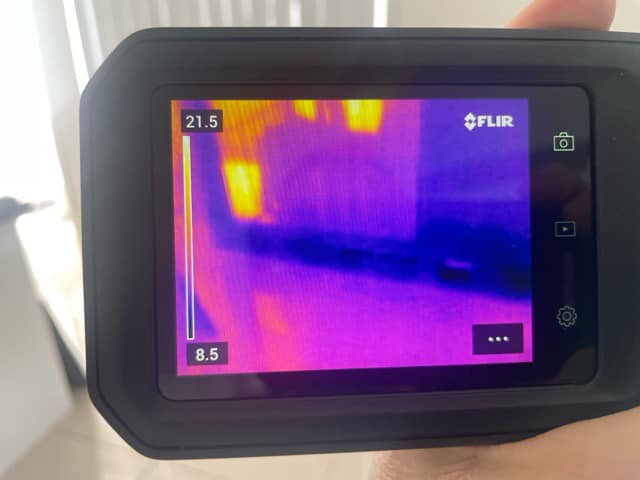Innovative Technologies for Detecting and Managing Mould

What Are the Latest Technologies for Mould Detection?
Recent advancements in technology have significantly improved our ability to detect and manage mould. Among the most noteworthy developments are thermal imaging cameras and moisture metres. These tools offer a sophisticated approach to identifying mould before it becomes a serious problem.
Thermal imaging cameras are a prime example of technological progress in mould detection. These cameras use infrared technology to detect temperature variations on surfaces. Mould often thrives in areas with high moisture content, which can affect the temperature of surrounding materials. By identifying these temperature changes, thermal imaging cameras can pinpoint areas where moisture might be accumulating, even if mould is not yet visible.
Moisture metres, another valuable tool, measure the moisture content of building materials. These devices come in various forms, including pin-type and pinless metres. Pin-type metres use metal probes to penetrate surfaces and gauge moisture levels, while pinless metres use electromagnetic signals to assess moisture without damaging the material. Both types of moisture metres are effective in detecting hidden moisture that could lead to mould growth.
How Do These Technologies Work?
Thermal imaging cameras work by capturing infrared radiation emitted from objects. This radiation varies with temperature, and the camera translates these variations into visible images. Areas with moisture will often appear cooler than their dry surroundings due to the heat retention properties of water. Thus, thermal imaging can reveal hidden leaks or damp spots behind walls, ceilings, or floors.
Moisture metres operate by measuring the electrical resistance or capacitance within materials. Water in building materials changes their electrical properties. By assessing these changes, moisture metres can provide accurate readings of moisture levels. High readings can indicate areas at risk of mould growth, allowing for targeted inspection and intervention.
What Are the Benefits of Using These Technologies?
The benefits of these advanced technologies are considerable. Early detection is perhaps the most significant advantage. Mould often develops in hidden or hard-to-reach areas, and traditional inspection methods may not always reveal these issues until they are extensive and costly. Thermal imaging cameras and moisture metres enable homeowners and professionals to identify potential problems before mould becomes visible. This proactive approach can prevent extensive damage to property and reduce the need for costly remediation efforts.
These technologies also improve the efficiency of mould management. By providing precise data on moisture levels and temperature variations, they help target specific areas that need attention. This targeted approach ensures that remediation efforts are focused on problem areas, improving the effectiveness of mould control measures.
Furthermore, using these technologies can help in verifying the success of mould remediation. After treatment, moisture metres can confirm that moisture levels have returned to normal, while thermal imaging can ensure that all sources of moisture have been addressed.
How Can Homeowners Access These Technologies?
Homeowners can access these technologies through professional mould inspection services. Many companies specialise in mould inspection and remediation, and they use advanced tools like thermal imaging cameras and moisture metres to conduct thorough assessments. These professionals have the expertise to interpret the data provided by these tools and make informed decisions about mould management.
For those interested in DIY mould detection, some of these technologies are available for personal use. However, it is essential to understand that effective use of these tools requires knowledge and experience. Incorrect usage can lead to inaccurate readings and potentially missed problems. Therefore, while DIY tools can be helpful for initial assessments, professional guidance is often recommended for comprehensive and accurate mould detection.
The Future of Mould Detection and Management
The field of mould detection and management continues to evolve. Future advancements may include even more sophisticated tools and techniques, such as sensors integrated into building materials that can provide real-time data on moisture levels and environmental conditions. Innovations in data analysis and artificial intelligence may also enhance our ability to predict and manage mould risks more effectively.
In summary, the latest technologies in mould detection, including thermal imaging cameras and moisture metres, offer significant advantages for early detection and efficient management of mould problems. These tools enable homeowners and professionals to identify hidden issues, target remediation efforts, and verify the success of treatments. Accessing these technologies through professional services or DIY options can greatly enhance mould management strategies, ensuring healthier living environments and better-protected properties.

